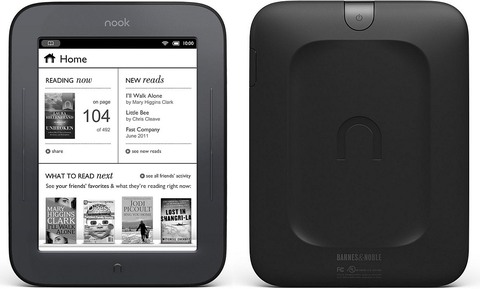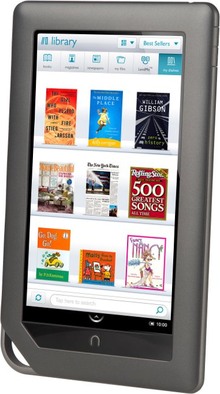If you would like to add more datasheets to the comparison table you can still find and add them around the site while browsing, querying or searching Device Specs. Meanwhile you will not lose the comparison table below. Furthermore unnecassary datasheets can be removed by clicking on the "Remove from comparison" buttons (ever more than one item during one page load) but in this case reloading the table will be needed. Then click again on the appropriate header "Compare" button.
|
|
| | |
|
Use the following link to refer to this comparison |

| 
| 
|
|
Remove all |
|  Add to compare Add to compare | |  Add to compare Add to compare | |  Add to compare Add to compare |
 Introduction Introduction |
Released |
2011 Apr 6 |
2011 Jun 11 |
2010 Oct 26 |
Hardware Designer |
Samsung Electronics |
Foxconn |
|
Manufacturer |
Samsung Electronics |
Foxconn |
|
OEM ID |
P1010-W16 |
|
|
Device Category |
Tablet |
PDA |
Tablet |
 Physical Attributes Physical Attributes |
Width |
190.09 mm |
130 mm |
130 mm |
Height |
120.45 mm |
170 mm |
210 mm |
Depth |
11.98 mm |
12 mm |
12 mm |
| Dimensions
| 7.48x4.74x0.47 inches |
5.12x6.69x0.47 inches |
5.12x8.27x0.47 inches |
Mass |
385 g |
212 g |
450 g |
|
13.58 ounces |
7.48 ounces |
15.87 ounces |
 Software Environment Software Environment |
Platform |
Android |
Android |
Android |
Operating System |
Google Android 2.2 (Froyo) |
Google Android 2.1 (Eclair) |
Google Android 2.2 (Froyo) |
 Application processor, Chipset Application processor, Chipset |
CPU Clock |
1000 MHz |
800 MHz |
800 MHz |
CPU |
Texas Instruments OMAP 3621, 2010, 32 bit, single-core, 32 Kbyte I-Cache, 32 Kbyte D-Cache, 45 nm, IMG PowerVR SGX530 GPU |
Texas Instruments OMAP 3621, 2010, 32 bit, single-core, 32 Kbyte I-Cache, 32 Kbyte D-Cache, 45 nm, IMG PowerVR SGX530 GPU |
Texas Instruments OMAP 3621, 2010, 32 bit, single-core, 32 Kbyte I-Cache, 32 Kbyte D-Cache, 45 nm, IMG PowerVR SGX530 GPU |
 Operative Memory Operative Memory |
RAM Type |
Yes |
Yes |
LPDDR SDRAM |
RAM Capacity (converted) |
512 MiB RAM |
256 MiB RAM |
512 MiB RAM |
 Non-volatile Memory Non-volatile Memory |
Non-volatile Memory Interface |
Yes |
Yes |
Yes |
Non-volatile Memory Capacity (converted) |
16 GB ROM |
2 GB ROM |
8 GB ROM |
|
|
1000 MiB total user storage |
6100 MiB total user storage |
 Display Display |
Display Diagonal |
178 mm |
152 mm |
178 mm |
|
7 inch |
6 inch |
7 inch |
Resolution |
1024x600 |
600x800 |
1024x600 |
Horizontal Full Bezel Width |
36.51 mm |
38.8 mm |
|
Display Area Utilization |
60.4% |
50.2% |
50.6% |
Pixel Density |
169 PPI |
167 PPI |
169 PPI |
Display Type |
Color TN-TFT LCD display |
mono E Ink display |
Color IPS TFT LCD display |
Number of Display Scales |
16.8M |
16 |
16.8M |
 Graphical Subsystem Graphical Subsystem |
Graphical Controller |
PowerVR SGX530 |
PowerVR SGX530 |
PowerVR SGX530 |
 Audio/Video Interfaces Audio/Video Interfaces |
A/V Out |
Yes |
No |
No |
|
Proprietary |
No |
No |
 Audio Subsystem Audio Subsystem |
Microphone(s) |
mono |
No |
No |
| Loudspeaker(s) |
stereo |
No |
mono |
| Audio Output |
3.5mm |
No |
3.5mm |
 Cellular Phone Cellular Phone |
 Secondary Cellular Phone Secondary Cellular Phone |
 Control Peripherals Control Peripherals |
Touchscreen Type |
Capacitive multi-touch screen |
Resistive screen |
Capacitive multi-touch screen |
 Communication Interfaces Communication Interfaces |
Expansion Interfaces |
TransFlash,
microSD,
microSDHC |
TransFlash,
microSD,
microSDHC |
TransFlash,
microSD,
microSDHC |
USB |
USB 2.0 |
USB 2.0 |
USB 2.0 |
|
USB HS (480 Mbps) |
USB HS (480 Mbps) |
USB HS (480 Mbps) |
| USB Services
| USB charging |
USB charging |
USB charging |
| USB Connector
| Proprietary |
USB Micro-B (Micro-USB) |
USB Micro-B (Micro-USB) |
Bluetooth |
Bluetooth 3.0 |
No |
No |
Wireless LAN |
802.11b,
802.11g,
802.11n |
802.11b,
802.11g,
802.11n |
802.11b,
802.11g,
802.11n |
| Wireless Services
| DLNA |
No |
No |
 Multimedia Broadcast Multimedia Broadcast |
 Satellite Navigation Satellite Navigation |
Complementary Satellite Services |
Geotagging |
No |
No |
 Primary Camera System Primary Camera System |
Camera Placement |
Rear |
No |
No |
Camera Image Sensor |
CMOS |
No |
No |
Number of effective pixels |
3.1 MP camera |
|
|
Zoom |
1.0 x optical zoom |
|
|
Focus |
CD AF |
No |
No |
Video Recording |
720x480 pixel |
|
|
|
30 fps |
|
|
Flash |
single LED |
No |
No |
Camera Extra Functions |
Macro mode |
No |
No |
 Secondary Camera System Secondary Camera System |
 Built-in Sensors Built-in Sensors |
Built-in compass |
Yes |
No |
No |
Built-in accelerometer |
Yes |
No |
Yes |
Built-in gyroscope |
Yes |
No |
No |
 Ingress Protection Ingress Protection |
Protection from solid materials |
Yes |
Yes |
Yes |
Protection from liquids |
Yes |
Yes |
Yes |
 Power Supply Power Supply |
Battery |
Li-ion |
Li-ion |
Li-ion |
|
built-in |
built-in |
built-in |
|
1-cell |
1-cell |
1-cell |
Nominal Battery Capacity |
|
1530 mAh battery |
|
Estimated Battery Life |
|
|
8.0 hours |
 Geographical Attributes Geographical Attributes |
Market Countries |
USA |
No |
No |
Mobile Operator |
|
|
|
 Datasheet Attributes Datasheet Attributes |
Data Integrity |
Final |
Final |
Final |
Added |
2011-03-16 09:50 |
2012-04-28 15:32 |
2012-04-28 15:41 |


